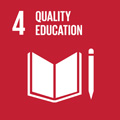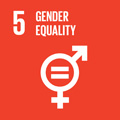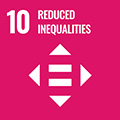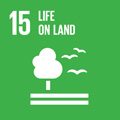- Docente: Serena Baiesi
- Credits: 9
- Language: English
- Teaching Mode: Traditional lectures
- Campus: Bologna
- Corso: First cycle degree programme (L) in Foreign Languages and Literature (cod. 0979)
-
from Feb 10, 2025 to May 14, 2025
Learning outcomes
At the end of the course students will be acquainted with the lineaments of English literary history. They will be able to read, understand and translate texts from English into Italian, and to deal with some basic critical methods and tools, in order to elaborate comments and critical opinions on the literary texts read during the course.
Course contents
The Gothic in Literature from Romanticism to the Nineteenth Century
On Christmas Day, 1764 Horace Walpole published The Castle of Otranto, the very first Gothic romance.The Gothic then flourished especially in the nineteenth century, creating a whole vocabulary of new creatures and landscapes and two of the great novel of the genre: Frankenstein and Dracula. This course concentrates on the great works of Gothic literature in several genres: romance, novel, poetry, and short-story, which are central to an understanding of literature from the eighteenth to the nineteenth century.
Using a selection of texts and employing a variety of critical approaches from the historical, feminist and queer theories, to the ecogothic and the role of science in literature, we will explore the multifarious levels of meaning in Gothic texts as well as looking at narrative strategies and a variety of themes including the political and revolutionary, the erotic and the exotic, the Promethian and the undead, the role of women.
The reading list includes works by H. Walpole, A. Radcliffe, S.T. Coleridge, J. Austen, J. Keats, M. Shelley, J. Polidori, R.L. Stevenson and B. Stoker as key texts of the Gothic genre in order to examine the ways in which the genre has developed from its origin to the ninteenth century.
The course includes an introductory parts dedicated to the history of English literature from the Eighteenth century, the Romantic to the Victorian Period.
Readings/Bibliography
Extracts from the texts on the syllabus together with other extracts read and commented on during the lectures will be made available to students in the on-line space "Virtuale".
Primary texts:
- H. Walpole, The Castle of Otranto (selection);
- A. Radcliffe, The Romance of the Forest; The Mysteries of Udolpho (selections);
- M.G. Lewis, The Monk (selections);
- J. Austen, Northanger Abbey (full novel);
- S.T. Coleridge, "The Rime of the Ancient Mariner" (selections);
- Mary Shelley, Frankenstein (selection);
- J. Keats "La Belle Dame Sans Mercie", Lamia (selection);
- Short story: J. Polidori, “The Vampire”; or R. L. Stevenson, “Olalla”;
- B. Stoker, Dracula (full novel)
Secondary reading:
History of English Literature:
L. M. Crisafulli e K. Elam (a cura di), Manuale di letteratura e cultura inglese, Bologna, BUP, 2009.
English Editions:
- English Literature in Contex, ed. P. Poplawski (Cambridge UP 2008) Ch. 3 "Restoration and eighteenth Century"; Ch. 4 "The Romantic Period"; Ch. 5 "The Victorian Age".
- The Norton Anthology of English Literature, vol. II or The Oxford Anthology (sala consultazione - Biblioteca LLSM)
- The Broadview Anthology of British Literature, "The Age of Romanticism", second ed., Broadview Press 2010.
- The Cambridge History of English Literature, ed. J. Chandler, Cambridge UP 2009.
Critical Essays:
Three chapters (4 for those students who are not attending lectures) at your choice from the following list:
- Maurizio Ascari; Serena Baiesi; David Levente Palatinus (eds.), Gothic Metamorphoses across the Centuries: Contexts, Legacies, Media. Peter Lang: 2020.
- Angela Wright and Dale Townshed (eds.), Romantic Gothic. An Edinburgh Companion, Edinburgh: Edinburgh University Press, 2016;
- Groom, Nick (2012) The Gothic: A Very Short Introduction, Oxford & London, Oxford University Press.
- Hogle, Jerrold E., ed. The Cambridge Companion to Gothic Fiction. Cambridge: Cambridge University Press, 2002.
- Punter, David, ed. A New Companion to the Gothic. Oxford and Malden, MA: Blackwell, 2012.
- Punter, David. The Literature of Terror: A History of Gothic Fictions from 1765 to the Present Day. Vol. 1 The Gothic Tradition.London and New York: Longman, 1996.
- Botting, Fred (2013) Gothic, 2nd edition, London, Routledge.
- Stevens, David (2000), The Gothic Tradition (Cambridge Contexts in Literature).
- D. Heiland, Gothic & Gender : An Introduction, Oxford, Blackwell, 2004, (Biblioteca del DLLSM)
- Auerbach, Nina. Our Vampires, Ourselves, University of Chicago Press, 1997.
- Spooner, Catherine and Emma McEvoy, eds. The Routledge Companion to Gothic. London and New York: Routledge, 2007.
- Jane Goodall, Christa Knellwolf (eds.), Frankenstein's Science Experimentation and Discovery in Romantic Culture, 1780–1830, Routledge, 2008.
- William Hughes, David Punter and Andrew Smith (eds.), The Blackwell Encyclopedia of the Gothic, Vol. II, Oxford: Blackwell-Wiley, 2013.
- Janet Todd, "Northanger Abbey" in The Cambridge Introduction to Jane Austen, Cambridge: Cambridge UP, 2012.
Teaching methods
Frontal lectures in English: introduction of the literary periods from the eighteenth century to the Victorian age; reading and comment of the primary sources; videos and film adaptations from literary works.
Assessment methods
The evaluation of the students' competencies and abilities acquired during the course consists in a written exam at the end of the course for those students who attended classes regularly as well as for those who do not attend classes.
The exam is split in two parts: the first part, lasting 40 minutes, will consist of short-answer and multiple-choice questions concerning the literary history and cultural context from the 18th to the 19th century; the second part, lasting 1 hour, will include open questions concerning the authors and texts covered during the course with also commentary on selected extracts.
Those students,who are able to demonstrate a wide and systematic understanding of the issues covered during classes, are able to use these critically and who master the field-specific language of the discipline will be given a mark of excellence. Those students who demonstrate a mnemonic knowledge of the subject with a more superficial analytical ability and ability to synthesize, a correct command of the language but not always appropriate, will be given a satisfactory mark. A superficial knowledge and understanding of the material, a scarce analytical and expressive ability that is not always appropriate will be rewarded with a ‘pass' mark. Students who demonstrate gaps in their knowledge of the subject matter, inappropriate language use, lack of familiarity with the literature in the program bibliography will not be given a pass mark.
Teaching tools
Online resourses available for student online; film and videos show during lectures.
Office hours
See the website of Serena Baiesi
SDGs




This teaching activity contributes to the achievement of the Sustainable Development Goals of the UN 2030 Agenda.
